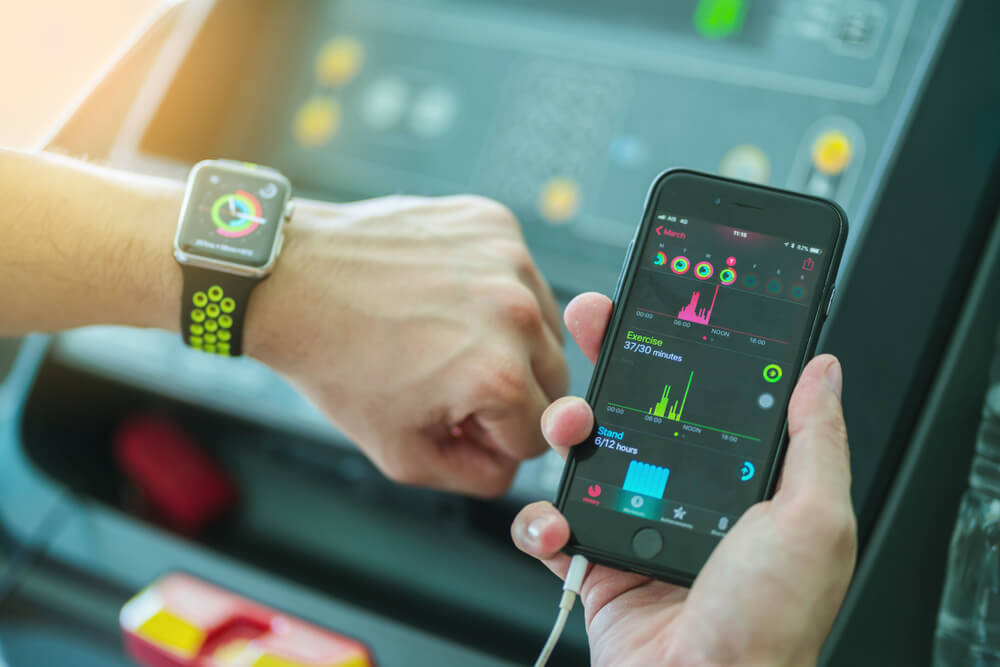How have wearables changed the capture of patient data?
The use of wearable technologies in clinical trials can reduce the need for site visits, as well as decrease the length of these visits for both clinicians and patients. With the use of devices such as Bluetooth oxygen sensors or glucometers, the need for patient visits to sites to record and sync data is reduced.
Using data recorded on wearable devices can also supplement, or even get rid of, in-clinic capabilities and tests, such as the six-minute walk test or range of motion tests for joint rotations.
What challenges are you seeing with deploying wearables in terms of clinical trial compliance?
The location of the study in terms of internet access and stability, and the type of device being used, can make it difficult to gather satisfactory data to ensure compliance.
The patchy upload time of Wi-Fi in certain countries means the device can’t sync data in real time with the clinical trial platform, leading to the possibility of losing this data. You also might not always have access to the technology to set up an API to sync data with the clinical trial platform.
What is the impact of consumers using their own commercialized device (BYOD) versus provisioning a medical grade wearable device?
Going down the BYOD route reduces the burden for patients because they’re already comfortable with using and wearing the device, which means the chance of compliance is greater. But from a data analysis standpoint, it’s more challenging.
The issue with provisioned devices is often their look and feel, as their clunky design makes wearing them a burden. However, the industry has been working on streamlining the look and feel of wearables, as well as changing where you can position the devices. Some devices can now be worn on a lanyard, clipped on a belt, or even attached to an already existing medical device that the patient is already using, such as an oxygen tube.
What are the challenges of standardizing data captured from a personal device versus a medical grade device?
BYOD causes an issue because consumer devices vary so much in their design, function and the way they measure data. Without understanding the algorithms behind each individual device, it’s difficult to capture the exact data points. It’s also challenging to analyze the data for all patients in a study, however it is possible to observe changes in the baseline for an individual patient.
Until there is a standard with commercial, consumer devices, from a clinical trial setting and a non-exploratory endpoint, provisioning a medical grade device is the best way to ensure the accuracy of the data.
What are the benefits of integrating wearables and ePRO data?
Directly integrating wearable data with ePRO data gives access to real world evidence (RWE) – a buzzword in the industry right now – which helps clinicians monitor the patient’s safety.
Integrating high-level summary data from a wearable based upon the trial outcome with ePRO data provides the best way for a physician or a sponsor to get a glimpse of patient activity in their day-to-day lives when they’re not at the clinic.
What impact does wearable device data have on trial outcomes?
Getting data from wearables earlier gives a better signal detection for what’s really going on with these patients. The physician can see that patients are struggling, and intervene earlier, instead of reaching the stage where patients have a significant adverse event and jeopardize their safety in the long run.
For example, a patient might be recording their response as, “I’m feeling fantastic, on a scale 1-10, my pain is at zero”. Yet when we look at their wearable data, they’re either not wearing their device or they’re not actually having zero pain. In fact, they must be in a lot of pain because they’re not moving.
This kind of information allows the physician to make changes or intervene where needed, either in adaptive trial design or in outreach to patients. It enables a pivot in the approach to the conduct of clinical trials and the treatment of patients.
What benefits can sponsors get with the direct integration of a patient’s wearable data into an EDC system?
The integration between wearables and ePRO in an EDC, not at the microsecond level but at that summary level data, provides more value for signal detection than it does for the end analysis.
It also allows you to see ahead of time whether you’re on track with collecting the data you need for your study analysis at the end of the trial. For example, instead of finding out at the end of your trial when you are analyzing your data that half of your patients were non-compliant with their wearables, you can have access to that information earlier on. You can then take steps to ensure that you don’t miss your trial endpoint because of lack of data. It can also potentially mean fewer studies because you’ve got a great volume and more meaningful data from within one study.
Up to this point, there has been apprehension about approaching regulatory authorities to use wearable data as a primary endpoint, but with the first study accepted by the FDA, this could all be about to change.
Image Credit: KANUT PHOTO / Shutterstock.com





























